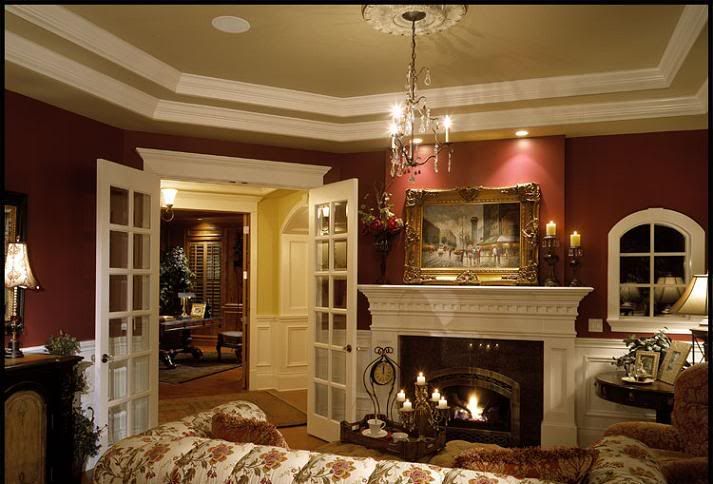Illustration: Egyptian Ornament from Owen Jones The Grammar of Ornament 1856
To many it must seem at times as if there were so many revival themes that passed through the nineteenth century that there were far too many to even count. Many were short lived, while others lasted decades, and others still, saw more than one revival in the century. This could, to some extent, be said to be true for the Egyptian Revival which initially gained much public popularity and even excitement through the exploration of Napoleon and his army in Egypt in the first few years of the nineteenth century, but also saw continual waxing and waning of its fashion status throughout much of the Victorian era.
Illustration: Satellite map of Egypt
Victorian Europe became entranced with the exotic and the eclectic in all its forms. Architecture and the decorative arts, as well as that of the fine arts, became imbued with all aspects of cultural fancy, both past and present. That much of this exoticism was the creation of the Victorian mind and had little if anything to do with original cultures was not important. The fact that elements of cultures could be transported across continents and time, added to exteriors and interior themes, sometimes seamlessly, at other times not, but at least with little or no hesitancy, says much about the confidence, if little else, of the Victorian psyche.
Although very few individuals were confident enough to stretch to an entirely ancient Egyptian themed interior, accessories were easily produced and Egyptian elements could be seen within textiles, ceramics, furniture, jewellery, metal and glass. Much of this interest was tied in with the ongoing rediscovery, through archaeology, of ancient Egypt.
Illustration: Egyptian Ornament from Owen Jones The Grammar of Ornament 1856
The original Egyptian culture lasted well over three thousand years, so there was an obvious dearth of cultural and decorative evidence available for exploration and exploitation. As the century progressed ancient Egypt was unravelled as a culture that seemed so much more complex, exotic and utterly alien to the relatively juvenile nations and populations of Europe. Large and small artefacts were shipped to Europe from Egypt during much of the nineteenth century. They occupied not only museum collections, but could also be seen as new monuments in parks and other public areas. Some were used as highlights reflecting the new found international and colonial strength of Europe. Along with copious detailed drawings and illustrations, usually produced in site in Egypt, there was enough information to keep the Egyptian Revival healthy fuelling its development in order to style itself across the century.
Illustration: Egyptian Ornament from Owen Jones The Grammar of Ornament 1856
Owen Jones in his The Grammar of Ornament, published in 1856, obviously felt comfortable and confident enough to produce a chapter on Egyptian Ornament that contained no less than nine full colour plates on the subject. This puts the number of plates on a par with the Indian, Medieval and Renaissance chapters. The plates gave ample examples of the unique colour and decoration perspective of ancient Egypt, and could be used by any student or designer to develop for a range of disciplines. Although Jones book was by no means the only example of its kind available, it was a high profile example and goes someway into explaining its continued popularity today.
As to ancient Egypt itself, it captivated and mesmerised its contemporary rivals and neighbours alike. It was considered ancient, exotic and singular by the Romans, and its eventual rediscovery by modern Europeans imbued it with yet another rejuvenation. It has influenced styles and themes throughout the following twentieth century, and in our own century is perhaps even more popular still. Exhibitions and museum collections are guaranteed good business if there is the possibility of an ancient Egyptian theme.
Illustration: Egyptian Ornament from Owen Jones The Grammar of Ornament 1856
The Victorian Egyptian revival, as in all revivals can never be seen in isolation. There are always connections, influences and inspirations in all these decorative revival styles. It is as well to be aware of this when viewing Jones The Grammar of Ornament. Although his book is not a slave to revivals or fashion, he was aware of underlying interests and fascinations within his own culture. To explain and quantify the cultures that fuelled those fascinations is at the root, at least partially, of The Grammar of Ornament.
Reference links:
The Egyptian Revival: Ancient Egypt as the Inspiration for Design Motifs in the West
Anubis Egyptian Revival Sculptural Clock
Egyptian Revival Jewelry and Design
14Kt Yellow Gold Egyptian Revival Amethyst Ring
Egyptian Maiden Torch Table Lamp/light New
Egyptomania: The Egyptian Revival : A Recurring Theme in the History of Taste
A Pair of Egyptian Revival Carved Fruitwood and Inlaid Side Chairs, English, Circa 1880 Giclee Poster Print, 18x24
Egyptian Revival in Bohemia (Czech Institute Monographs)
Egyptian Revival
The Revival Styles in American Memorial Art























No comments:
Post a Comment